Growing eggplants in pots might seem daunting, but trust me, it’s easier than you think! Imagine plucking fresh, vibrant eggplants right from your patio – ready to be transformed into delicious baba ghanoush or a hearty eggplant parmesan. That’s the magic we’re unlocking today with these simple, yet effective, DIY tricks.
Eggplants, also known as aubergines, have a rich history, dating back thousands of years to ancient Asia. They were initially cultivated for medicinal purposes before becoming a culinary staple. Over time, different cultures have embraced the eggplant, developing unique and flavorful recipes. Now, you can participate in this tradition, even without a sprawling garden!
In today’s fast-paced world, many of us lack the space or time for traditional gardening. That’s where container gardening comes in! Growing eggplants in pots allows you to enjoy the satisfaction of homegrown produce, regardless of your living situation. Plus, it’s a fantastic way to reduce your carbon footprint and connect with nature. I’m going to share my favorite tips and tricks to ensure your potted eggplants thrive, producing a bountiful harvest. Get ready to roll up your sleeves and let’s get gardening!
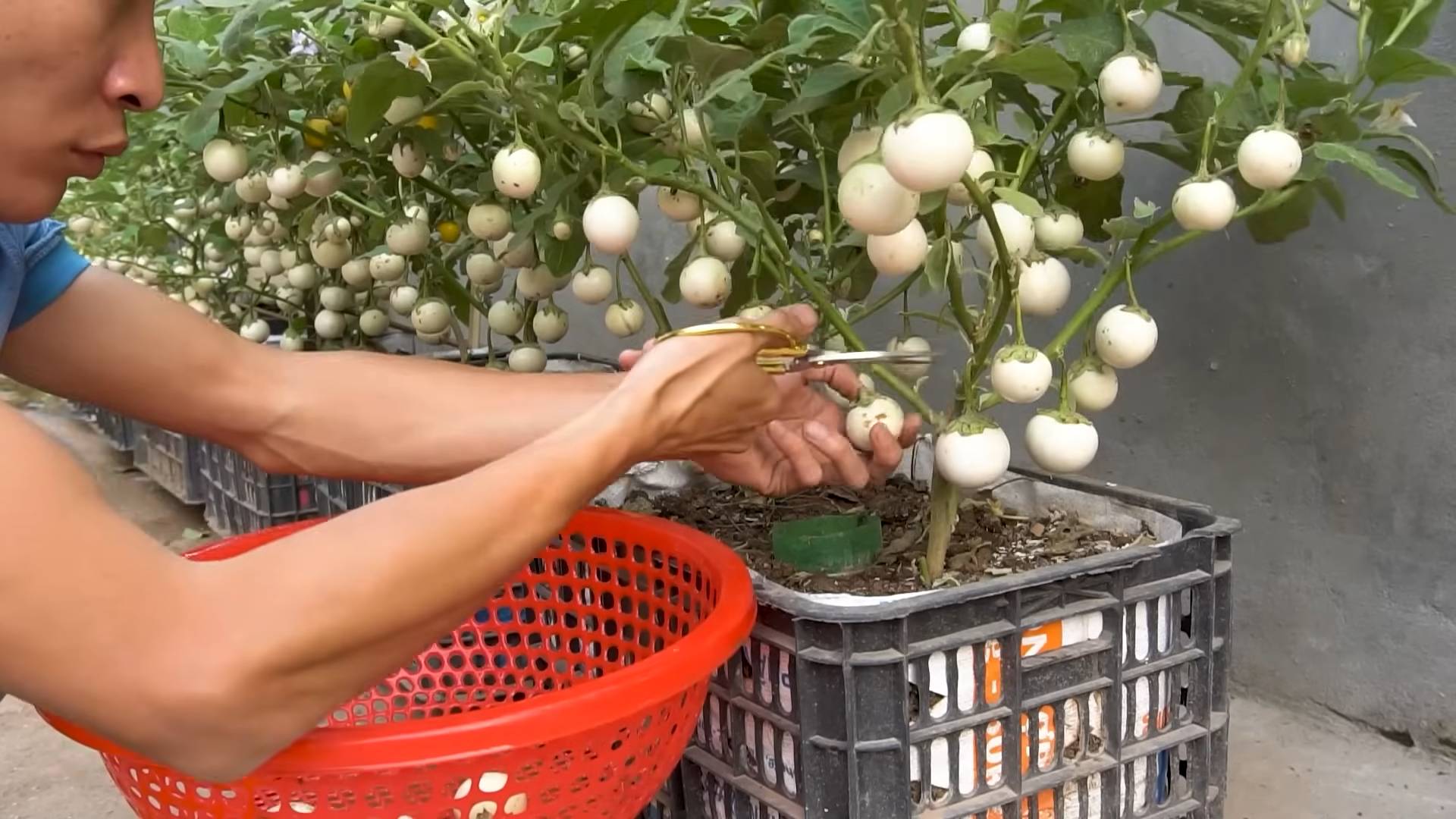
Growing Eggplants in Pots: A Comprehensive DIY Guide
Hey there, fellow gardening enthusiasts! I’m so excited to share my secrets to successfully growing eggplants in pots. It’s totally doable, even if you don’t have a sprawling garden. I’ve learned a lot through trial and error, and I’m here to guide you through every step, from choosing the right variety to harvesting your delicious, homegrown eggplants. Let’s get started!
Choosing the Right Eggplant Variety
Not all eggplants are created equal, especially when it comes to container gardening. You’ll want to pick a variety that’s naturally compact and well-suited for growing in pots. Here are a few of my favorites:
* ‘Patio Baby’: This is a fantastic choice for beginners. It produces small, bite-sized eggplants and stays relatively compact.
* ‘Hansel’: Another great option for smaller spaces, ‘Hansel’ produces clusters of slender, purple eggplants.
* ‘Fairy Tale’: These eggplants are beautiful and delicious, with a mild flavor. They’re also relatively compact and well-suited for containers.
* ‘Little Fingers’: As the name suggests, these eggplants are small and slender, perfect for grilling or stir-frying.
Gathering Your Supplies
Before you start planting, you’ll need to gather all your supplies. Trust me, having everything on hand will make the process so much smoother. Here’s what you’ll need:
* Eggplant seeds or seedlings: You can start from seed or buy seedlings from a local nursery. I personally prefer seedlings because they give you a head start.
* Large pots: Choose pots that are at least 14-16 inches in diameter and depth. Eggplants need plenty of room for their roots to grow. Make sure the pots have drainage holes!
* High-quality potting mix: Don’t use garden soil! It’s too heavy and doesn’t drain well. A good potting mix will provide the right nutrients and drainage for your eggplants.
* Slow-release fertilizer: This will provide your eggplants with a steady supply of nutrients throughout the growing season.
* Watering can or hose: You’ll need to water your eggplants regularly, especially during hot weather.
* Stakes or cages: Eggplants can get quite heavy, so you’ll need to provide support to prevent them from toppling over.
* Gardening gloves: Protect your hands from dirt and thorns.
* Trowel: For planting and transplanting.
* Optional: Mulch (straw, wood chips, or shredded bark) to help retain moisture and suppress weeds.
Planting Your Eggplants
Now for the fun part! Here’s how to plant your eggplants in pots:
1. Prepare the pots: Fill the pots with potting mix, leaving about an inch or two of space at the top.
2. Add slow-release fertilizer: Sprinkle the fertilizer evenly over the potting mix, following the instructions on the package.
3. Plant the seeds or seedlings:
* From seed: Sow the seeds about 1/4 inch deep and water gently. Keep the soil moist until the seeds germinate.
* From seedlings: Gently remove the seedlings from their containers and loosen the roots slightly. Dig a hole in the potting mix that’s large enough to accommodate the root ball. Place the seedling in the hole and backfill with potting mix. Water thoroughly.
4. Stake or cage your eggplants: Insert a stake or cage into the pot next to the eggplant. This will provide support as the plant grows.
5. Mulch (optional): Apply a layer of mulch around the base of the plant to help retain moisture and suppress weeds.
Caring for Your Eggplants
Once your eggplants are planted, it’s important to provide them with the right care to ensure they thrive. Here’s what you need to do:
1. Watering: Water your eggplants regularly, especially during hot weather. The soil should be consistently moist, but not soggy. Check the soil moisture by sticking your finger into the soil. If the top inch feels dry, it’s time to water. I usually water deeply every 2-3 days, but this will depend on the weather and the size of your pots.
2. Sunlight: Eggplants need at least 6-8 hours of sunlight per day. Place your pots in a sunny location where they’ll get plenty of light. If you live in a very hot climate, you may need to provide some afternoon shade to prevent the plants from getting scorched.
3. Fertilizing: In addition to the slow-release fertilizer you added at planting time, you’ll need to fertilize your eggplants regularly throughout the growing season. I like to use a liquid fertilizer that’s specifically formulated for vegetables. Follow the instructions on the package for application rates and frequency. I usually fertilize every 2-3 weeks.
4. Pruning: Pruning can help improve air circulation and encourage fruit production. Remove any yellowing or dead leaves. You can also pinch off the tips of the branches to encourage bushier growth.
5. Pest and disease control: Eggplants can be susceptible to pests and diseases, such as aphids, flea beetles, and blossom end rot. Inspect your plants regularly for signs of problems. If you find any pests, you can try spraying them with insecticidal soap or neem oil. For blossom end rot, make sure your plants are getting enough calcium. You can add calcium to the soil by mixing in some crushed eggshells or bone meal.
6. Supporting the fruit: As your eggplants grow, they can get quite heavy and may need additional support. You can use twine to tie the branches to the stakes or cages.
Pollination
Eggplants are self-pollinating, but they often benefit from a little help, especially when grown indoors or in sheltered locations. Here’s how you can help pollinate your eggplants:
1. Hand-pollination: Use a small paintbrush or cotton swab to gently transfer pollen from one flower to another. Do this in the morning, when the pollen is most viable.
2. Shake the plants: Gently shake the plants to release pollen.
3. Encourage pollinators: Plant flowers that attract pollinators, such as bees and butterflies, near your eggplants.
Harvesting Your Eggplants
The moment you’ve been waiting for! Here’s how to harvest your eggplants:
1. Timing: Eggplants are usually ready to harvest about 60-80 days after transplanting. The exact timing will depend on the variety and the growing conditions. Look for eggplants that are firm, glossy, and have a deep color. The skin should be smooth and unblemished.
2. Technique: Use a sharp knife or pruning shears to cut the eggplant from the plant. Leave about an inch of stem attached to the eggplant.
3. Storage: Store your eggplants in the refrigerator for up to a week.
Troubleshooting
Even with the best care, you may encounter some problems when growing eggplants in pots. Here are a few common issues and how to fix them:
* Blossom end rot: This is caused by a calcium deficiency. Make sure your plants are getting enough calcium by adding crushed eggshells or bone meal to the soil. Also, avoid overwatering, as this can prevent the plants from absorbing calcium.
* Aphids: These small, sap-sucking insects can weaken your plants. Spray them with insecticidal soap or neem oil.
* Flea beetles: These tiny beetles can chew holes in the leaves of your eggplants. Cover your plants with row covers to prevent flea beetles from reaching them. You can also spray them with insecticidal soap or neem oil.
* Poor fruit set: This can be caused by a number of factors, including lack of pollination, high temperatures, and nutrient deficiencies. Make sure your plants are getting enough sunlight, water, and fertilizer. You can also try hand-pollinating the flowers.
Extra Tips for Success
Here are a few extra tips to help you grow the best eggplants possible:
* Rotate your crops: Don’t plant eggplants in the same spot year after year. This can help prevent soilborne diseases.
* Choose the right pot size: Make sure your pots are large enough to accommodate the root system of your eggplants.
* Provide adequate support: Eggplants can get quite heavy, so you’ll need to provide support to prevent them from toppling over.
* Monitor your plants regularly: Inspect your plants regularly for signs of pests and diseases. The sooner you catch a problem, the easier it will be to fix.
* Don’t give up! Growing eggplants can be challenging, but it’s also very rewarding. Don’t be discouraged if you encounter some problems along the way. Just keep learning
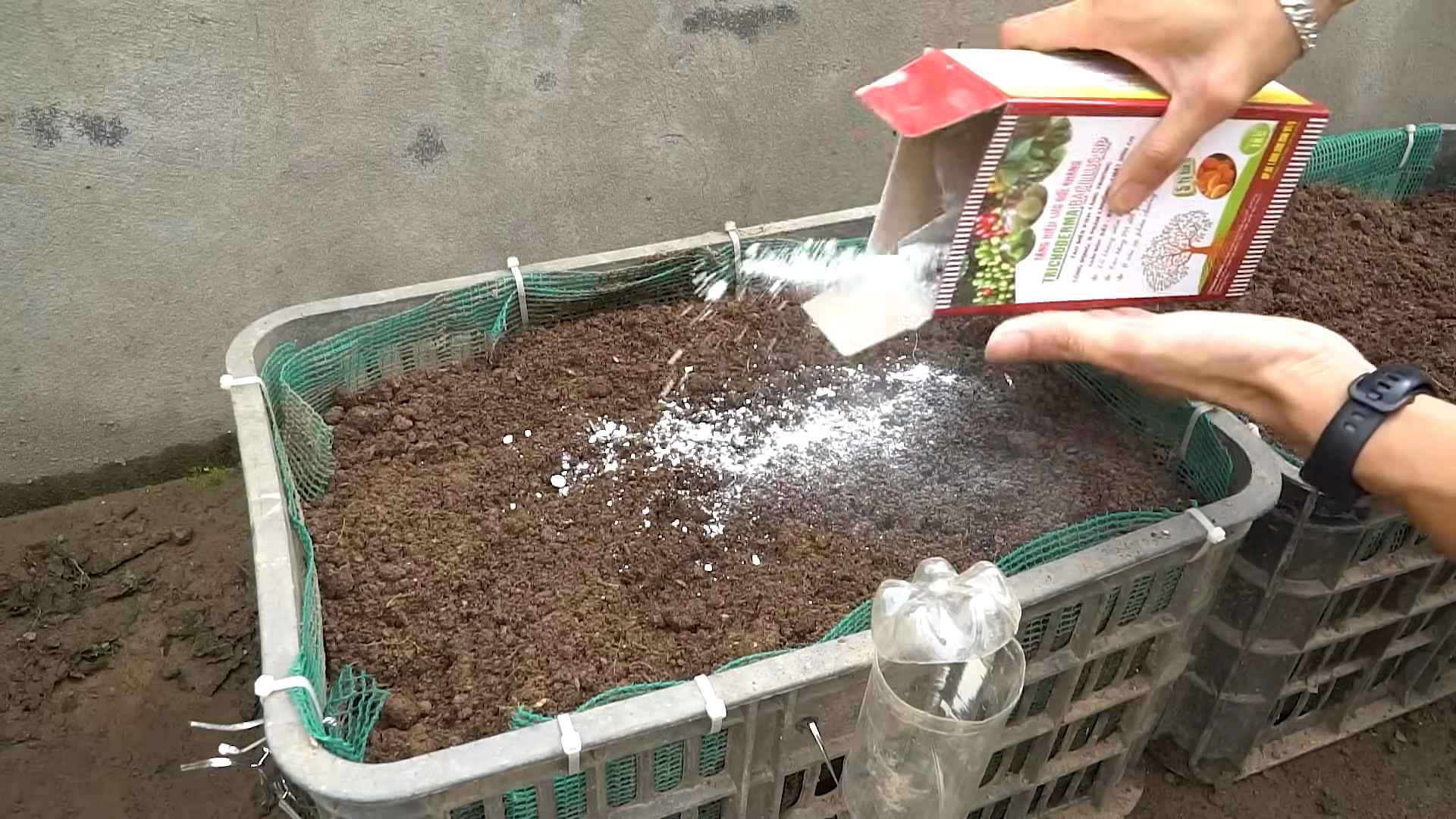
Conclusion
So, there you have it! Growing eggplants in pots isn’t just a possibility; it’s a rewarding and accessible way to enjoy fresh, homegrown produce, even if you’re short on space. We’ve walked through the essential steps, from selecting the right variety and pot size to providing optimal sunlight, water, and nutrients. But why should you actually give this a try?
Simply put, the satisfaction of harvesting your own plump, glossy eggplants, knowing you nurtured them from tiny seedlings to mature fruit, is unparalleled. It’s a connection to nature, a sustainable practice, and a delicious addition to your culinary repertoire. Plus, growing eggplants in pots offers a level of control you simply don’t get with in-ground gardening. You can easily move your plants to chase the sun, protect them from unexpected frost, or even bring them indoors during particularly harsh weather.
Beyond the basic guidelines, there’s plenty of room for experimentation and personalization. Consider trying different eggplant varieties to discover your favorites. Perhaps you’d like to grow the classic ‘Black Beauty,’ the slender ‘Japanese Long,’ or the vibrant ‘Thai Green’ eggplant. You can also experiment with different soil amendments, such as adding compost tea or bone meal, to boost your plants’ growth and fruit production.
Don’t be afraid to get creative with your container choices! While terracotta pots are classic and aesthetically pleasing, plastic pots are lighter and retain moisture better. You can even repurpose large buckets or tubs, as long as they have adequate drainage holes.
And speaking of drainage, remember that proper drainage is crucial for healthy eggplant growth. Soggy soil can lead to root rot and other problems. So, make sure your pots have plenty of drainage holes and that you’re using a well-draining potting mix.
Ready to embark on your eggplant-growing adventure? We encourage you to give this DIY trick a try. Start small, learn as you go, and don’t be discouraged by occasional setbacks. Gardening is a journey, not a destination.
Once you’ve harvested your first crop of homegrown eggplants, we’d love to hear about your experience! Share your tips, tricks, and photos in the comments below. Let’s create a community of eggplant enthusiasts and inspire others to discover the joys of growing their own food. After all, there’s nothing quite like the taste of a freshly picked eggplant, grilled to perfection and drizzled with olive oil and herbs. Happy gardening!
Frequently Asked Questions (FAQ)
What is the best time to start growing eggplants in pots?
The ideal time to start growing eggplants depends on your climate. In warmer regions with long growing seasons, you can start seeds indoors 6-8 weeks before the last expected frost. In cooler regions, you may need to start them even earlier. The key is to ensure that the seedlings have enough time to mature and produce fruit before the first frost of fall. You can also purchase starter plants from a local nursery if you prefer not to start from seed.
What size pot is needed for growing eggplants?
Eggplants need a relatively large pot to accommodate their root system and support their growth. A minimum of 5-gallon pot is recommended, but a 10-gallon pot or larger is even better. The larger the pot, the more room the roots have to grow, and the more stable the plant will be. Make sure the pot has adequate drainage holes to prevent waterlogging.
How much sunlight do eggplants need?
Eggplants are sun-loving plants and need at least 6-8 hours of direct sunlight per day to thrive. Choose a location that receives plenty of sunlight throughout the day. If you live in a particularly hot climate, you may need to provide some afternoon shade to prevent the plants from getting scorched.
How often should I water my eggplants in pots?
Water eggplants regularly, especially during hot, dry weather. The soil should be kept consistently moist, but not soggy. Water deeply whenever the top inch of soil feels dry to the touch. Avoid overhead watering, as this can promote fungal diseases. Instead, water at the base of the plant.
What kind of fertilizer should I use for eggplants?
Eggplants are heavy feeders and need regular fertilization to produce abundant fruit. Use a balanced fertilizer with a ratio of 10-10-10 or 14-14-14. You can also use a fertilizer specifically formulated for tomatoes or vegetables. Fertilize every 2-3 weeks during the growing season.
How do I prevent pests and diseases on my eggplants?
Monitor your plants regularly for pests and diseases. Common pests that affect eggplants include aphids, flea beetles, and spider mites. You can control these pests with insecticidal soap or neem oil. Common diseases include fungal diseases like powdery mildew and blossom-end rot. Prevent these diseases by providing good air circulation, avoiding overhead watering, and ensuring that the plants have adequate calcium.
Why are my eggplant flowers falling off without producing fruit?
This is a common problem called blossom drop. It can be caused by several factors, including temperature extremes, lack of pollination, and nutrient deficiencies. To prevent blossom drop, ensure that your plants are getting enough sunlight, water, and fertilizer. You can also try hand-pollinating the flowers by gently shaking the plant or using a small brush to transfer pollen from one flower to another.
How do I know when my eggplants are ripe?
Eggplants are typically ready to harvest when they are glossy, firm, and have reached their mature size. The skin should be smooth and unblemished. Gently press the skin with your finger; if it springs back, the eggplant is ripe. If it feels hard and doesn’t give, it’s likely overripe. Use a sharp knife or pruners to cut the eggplant from the plant, leaving a short stem attached.
Can I grow eggplants indoors?
While it’s possible to grow eggplants indoors, it can be challenging. Eggplants need a lot of sunlight, so you’ll need to provide supplemental lighting with grow lights. You’ll also need to hand-pollinate the flowers. Indoor-grown eggplants may not produce as much fruit as those grown outdoors.
What are some good companion plants for eggplants?
Companion planting can help to improve the health and productivity of your eggplants. Good companion plants for eggplants include basil, thyme, marigolds, and peppers. Basil helps to repel pests, while marigolds attract beneficial insects. Peppers can provide shade for eggplants in hot climates.
Can I save seeds from my homegrown eggplants?
Yes, you can save seeds from your homegrown eggplants, but keep in mind that if you grew hybrid varieties, the seeds may not produce plants that are true to type. To save seeds, allow the eggplants to fully mature on the plant until they are overripe and the skin is dull. Then, scoop out the seeds and rinse them thoroughly. Spread the seeds out on a paper towel to dry completely before storing them in an airtight container in a cool, dark place.

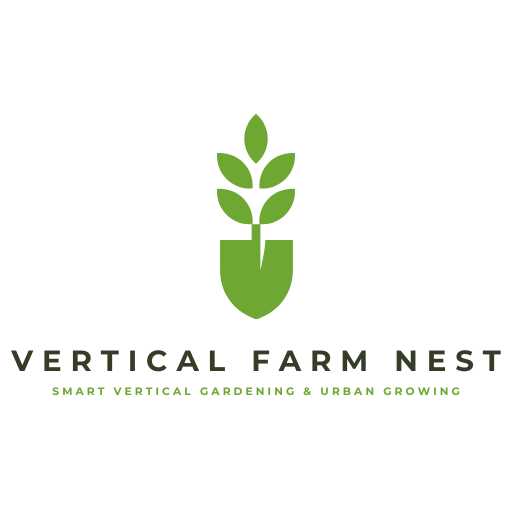
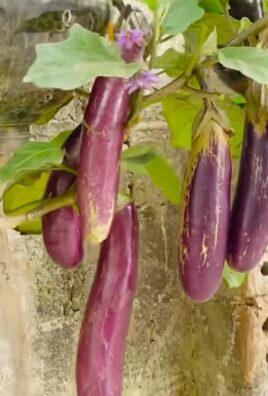
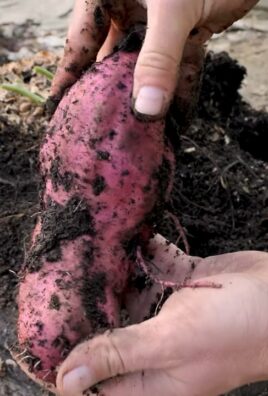

Leave a Comment